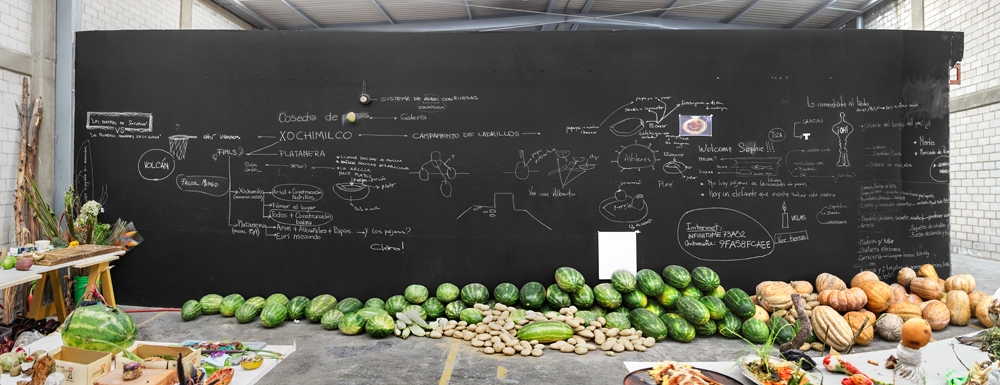When you enter Adrián Villar Rojas’s Los Teatros de Saturno (2014), you enter a mode of being in the world akin to what Walter Benjamin called ‘the adorable detail’, and, I might add, the generous detail. In Villar Rojas’s works there is an overabundance that is lavishly baroque and at the same time as simple as dirt: everything starts with clay and mutates forth from there. One might even borrow the term neobarroso, coined by Argentinean poet Néstor Perlongher (with the intentional pun between barroco and barro – mud, clay), to crystallise the experience of this exhibition.
And it is an experience, more than a mere show. For those who saw Villar Rojas’s exhibition at London’s Serpentine Gallery, his universe of plenty might be familiar, and yet this time, one could say that the works have taken root, germinated, luxuriated, propagated, branched out, pullulated and invaded a whole new host – and transformed it, as all good parasites do. Villar Rojas’s ever-changing work is not focused on a single piece or group of pieces; rather, it is a whole process that is porous to the context and involves a highly adaptable team of people, a nomadic ‘studio’ that takes momentary root at any given place.
Saturn, the god of agriculture, has blessed this space with fertile objects – small, discreet, mundane even – which acquire a small but potent weight, often enhanced, framed or mounted by surprising excrescences of various kinds.
Even more than a ‘studio’, his group of carpenters, welders, farmers and jewellery makers is both a lab and a theatre troupe: confecting and concocting the pieces that seem to sprout from the gallery floor and also playing their parts as workers, collaborators, accomplices. Saturn, the planet, has many rings and many satellites, and so these players orbit around their director. Behind the scenes, then, we have a working lab. And onstage, the entire gallery floor is taken over by a fertile soil that has given way to a maze of mutant maize, a bejewelled watermelon walkabout, a snaking path of sneakers grafted onto eggplants.
As you walk along this gallery-cropped-up-as-field, you notice dead betta fish are organised next to a clay and coloured plaster-filled squash, the sprouted potatoes (already present in his previous show) have now been grafted onto other vegetables and crowned with the melted plastic of a fluorescent running shoe, a silver claw hangs onto a shell next to a sneaker filled with crystals and bound by metal triangles, bones grow out of bread and fruit incubates eggs. Saturn, the god of agriculture, has blessed this space with fertile objects – small, discreet, mundane even – which acquire a small but potent weight, often enhanced, framed or mounted by surprising excrescences of various kinds.
Mutatis mutandis, it would seem that in this context Villar Rojas’s work reads less romantically than before and suddenly closer to the textures and feeling of a piece by Gabriel Orozco or Abraham Cruzvillegas: earthy, alive, simple yet filled with gravitas. It even echoes Colombian-Armenian performance artist Mar.a Teresa Hincapi.’s clothing maze Una Cosa Es una Cosa (1990), forcing the visitor to walk carefully and in a way directed by the artist – do we become actors in his play as well? The work is to be experienced: to be felt through time as it disintegrates back into pure organic matter. It is less a monumental ‘piece’ simply to be admired and consumed. Villar Rojas’s work here is as much the intricate process behind the work: you can only imagine the working tables filled with vegetables, fruits and sprouts of various kinds alongside a welding atelier, a ton (literally) of watermelon in the studio, the many weeks of grafting, sprouting, growing, casting, moulding collectively, the everyday interlocked and perfectly rehearsed action to create something together, to cultivate – these too are the theatres of Saturn.
This article was first published in the April 2014 issue
